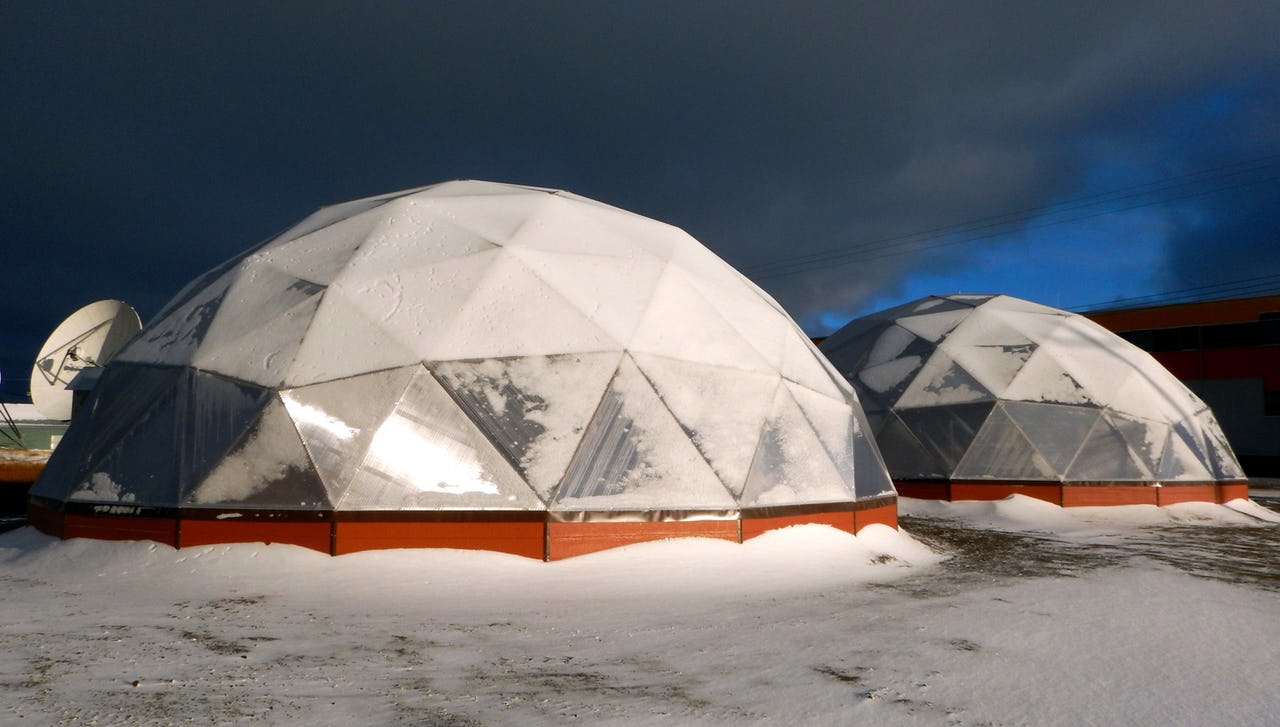The Future of Arctic Farming - Infographic

Green Iglus, solar retention greenhouses in Nunavut, aim at producing greenery and produce for the community. Photo: Mike Beauregard
Greenhouses and Hydroponic Systems are Becoming Ripe with Possibility
Despite difficult growing conditions, the number of vegetable farms in Alaska, Norway, Canada and other Arctic regions appears to have increased. The hope is that a better, more affordable supply of vegetables in Arctic communities will help battle public health issues, improve food security and decrease the economy’s dependence on oil and imports.
This infographic designed by Jennifer Cook illustrates the challenges of vegetable production in the Arctic as well as possible solutions offered by Arctic farming. Lower temperatures and permafrost result in short growing seasons and slow down the growing process. A frequent solution, the import of vegetables, is often unreliable and expensive. Combined with other factors, this can affect the food security, health, well-being, and financial situation of communities. In recent years, the number of Arctic farming projects based on greenhouses, hydroponics, or other technologies has developed rapidly, offering the potential for a better, more affordable, and more sustainable supply of fresh vegetables.